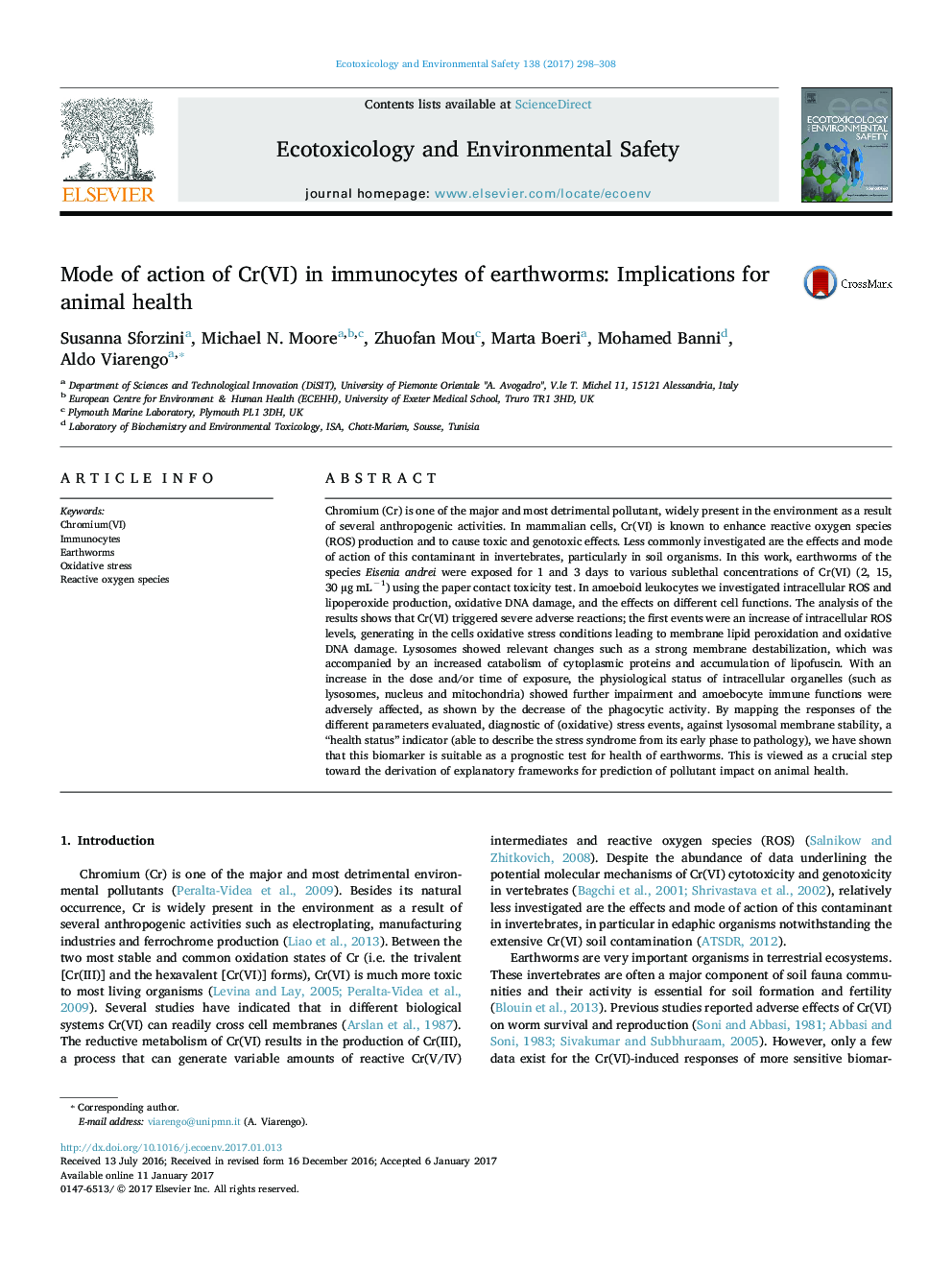| کد مقاله | کد نشریه | سال انتشار | مقاله انگلیسی | نسخه تمام متن |
|---|---|---|---|---|
| 5747954 | 1618926 | 2017 | 11 صفحه PDF | دانلود رایگان |

- Cr(VI) triggers severe adverse reactions in amoeboid leukocytes of earthworms.
- Cr(VI) enhances ROS production leading to lipid peroxidation and oxidative DNA damage.
- Lysosomal membrane destabilization is accompanied by an increased autophagic activity.
- Cr(VI)-induced cellular effects lead to an impairment of amoebocyte immune functions.
- PCA demonstrates that lysosomal membrane stability is prognostic for earthworm health.
Chromium (Cr) is one of the major and most detrimental pollutant, widely present in the environment as a result of several anthropogenic activities. In mammalian cells, Cr(VI) is known to enhance reactive oxygen species (ROS) production and to cause toxic and genotoxic effects. Less commonly investigated are the effects and mode of action of this contaminant in invertebrates, particularly in soil organisms. In this work, earthworms of the species Eisenia andrei were exposed for 1 and 3 days to various sublethal concentrations of Cr(VI) (2, 15, 30 µg mLâ1) using the paper contact toxicity test. In amoeboid leukocytes we investigated intracellular ROS and lipoperoxide production, oxidative DNA damage, and the effects on different cell functions. The analysis of the results shows that Cr(VI) triggered severe adverse reactions; the first events were an increase of intracellular ROS levels, generating in the cells oxidative stress conditions leading to membrane lipid peroxidation and oxidative DNA damage. Lysosomes showed relevant changes such as a strong membrane destabilization, which was accompanied by an increased catabolism of cytoplasmic proteins and accumulation of lipofuscin. With an increase in the dose and/or time of exposure, the physiological status of intracellular organelles (such as lysosomes, nucleus and mitochondria) showed further impairment and amoebocyte immune functions were adversely affected, as shown by the decrease of the phagocytic activity. By mapping the responses of the different parameters evaluated, diagnostic of (oxidative) stress events, against lysosomal membrane stability, a “health status” indicator (able to describe the stress syndrome from its early phase to pathology), we have shown that this biomarker is suitable as a prognostic test for health of earthworms. This is viewed as a crucial step toward the derivation of explanatory frameworks for prediction of pollutant impact on animal health.
260
Journal: Ecotoxicology and Environmental Safety - Volume 138, April 2017, Pages 298-308